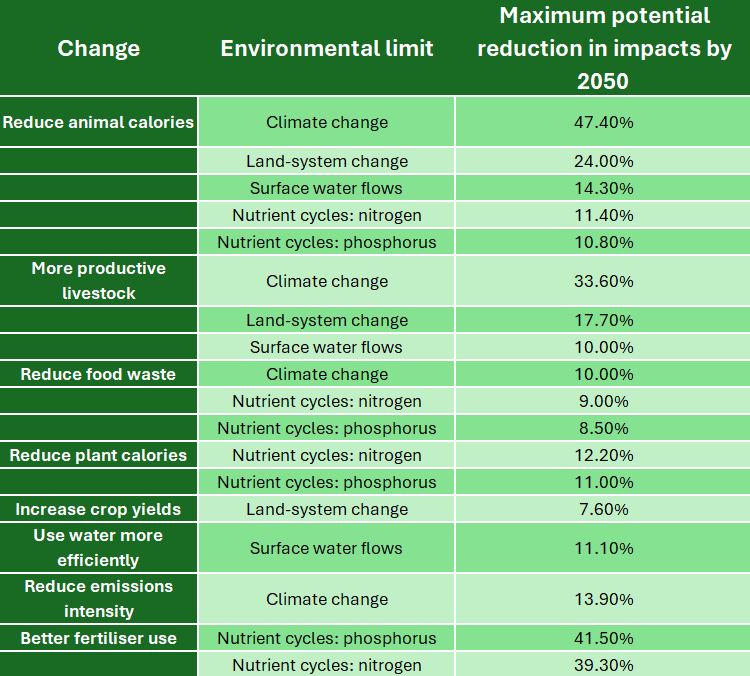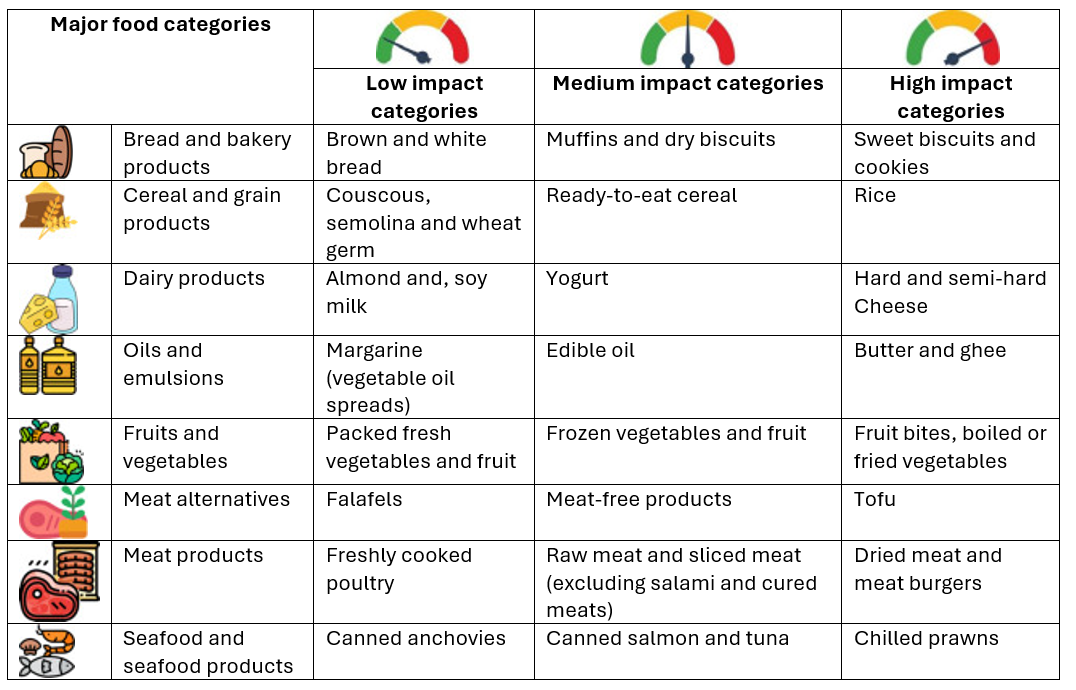Can we eat to save the world?
A guide to sustainable food choices backed by science
The way we grow, produce and consume food is deeply entangled with the fate of our planet. Globally, food systems contribute over 20% of greenhouse gas emissions, use 70% of fresh water and drive biodiversity loss through land clearing and fertiliser runoff. Recent research from Australian scientists has clarified both the scale of the crisis and the ability of individuals to make a difference.
What the science says
Hadjikakou and Bryan (2025) conducted a meta-analysis of food system sustainability, assessing over one million scenarios. They found that only a tiny fraction (0.02%) of these activities could keep us within required planetary boundaries. Also, no single measure can solve this problem. Instead, we need to adopt various practices simultaneously such as dietary changes, improved farming systems and fertiliser management, plus food waste reduction to improve outcomes. They showed that flexitarian diets and better livestock practices could contribute most to reducing emissions, land use, and water stress.
Table 1. Environmental benefits of key farming interventions
Top 8 changes to make farming sustainable
The changes shown here do not directly stack as there would be overlap. The third column refers to the maximum effect an individual change could have if applied in isolation at the highest level of ambition. See Hadjikakou (2025) for stacked reduction impacts.
Source: The Conversation
How sustainable is your weekly grocery shop?
In a 2024 study, Hadjikakou and colleagues analysed over 63,000 Australian supermarket items to quantify their environmental footprints. By making realistic food swaps, such as replacing beef burgers with chicken or using yoghurt instead of cheese, consumers can reduce their environmental impact by up to 96%. These substitutions don't require radical dietary changes—just smarter decisions within food groups.
Table 2. Environmental benefits of doable food swaps
Table 1. How food swaps contribute to low, medium and high Greenhouse Gas (GHG) emissions.
This is a great table to have on the back of your shopping lists, or on the fridge!
(Source: The Conversation, https://theconversation.com/how-sustainable-is-your-weekly-grocery-shop-these-small-changes-can-have-big-benefits-234367. Their table is more interactive.
The Power of the plate: Individual actions that matter
While we may think that solving climate change requires global agreements, what we eat every day shapes the demand side of the problem. Flexitarian diets — rich in legumes, vegetables, whole grains and modest amounts of animal protein — are associated with up to 47% reductions in emissions (Hadjikakou & Bryan, 2025). Food waste reduction is another key driver of greenhouse gas emissions, as up to 30% of food is wasted globally (Food and Agriculture Organization, 2019). Also, avoiding nutrient-intensive foods helps reduce nitrogen and phosphorus pollution.
What you can do today
• Replace red meat (beef, lamb and pork) with poultry or legumes in 2–3 meals per week.
• Buy only what you will eat – check your fridge, plan meals and freeze leftovers.
• Buy food with less packaging and certified eco-labels.
• Support regenerative farming and organic produce when possible.
• Educate family and friends with simple swaps such as almond milk or soy milk over cow's milk, or a vegetable stir-fry instead of mince.
• Reduce portion sizes of animal products and increase vegetable variety
Conclusion: A planet on the dinner table
Food is personal - and also political, ecological and cultural. In a world facing ecological breakdown, rethinking what we eat — and how it gets on our plate — is not just a dietary choice. It's a planetary one. And with science in hand, we now know that even modest shifts can push us back toward planetary balance.
References
Food and Agriculture Organization. (2019). The State of Food and Agriculture: Moving Forward on Food Loss and Waste Reduction.
Hadjikakou, M., & Bryan, B. A. (2025). Farming within Earth's limits is still possible – but it will take a Herculean effort. The Conversation. https://theconversation.com/farming-within-earths-limits-is-still-possible-but-it-will-take-a-herculean-effort-234023
Hadjikakou, M., Archibald, C., Geyik, Ö., & Shah, P. (2024). How sustainable is your weekly grocery shop? These small changes can have big benefits. The Conversation. https://theconversation.com/how-sustainable-is-your-weekly-grocery-shop-these-small-changes-can-have-big-benefits-216353


